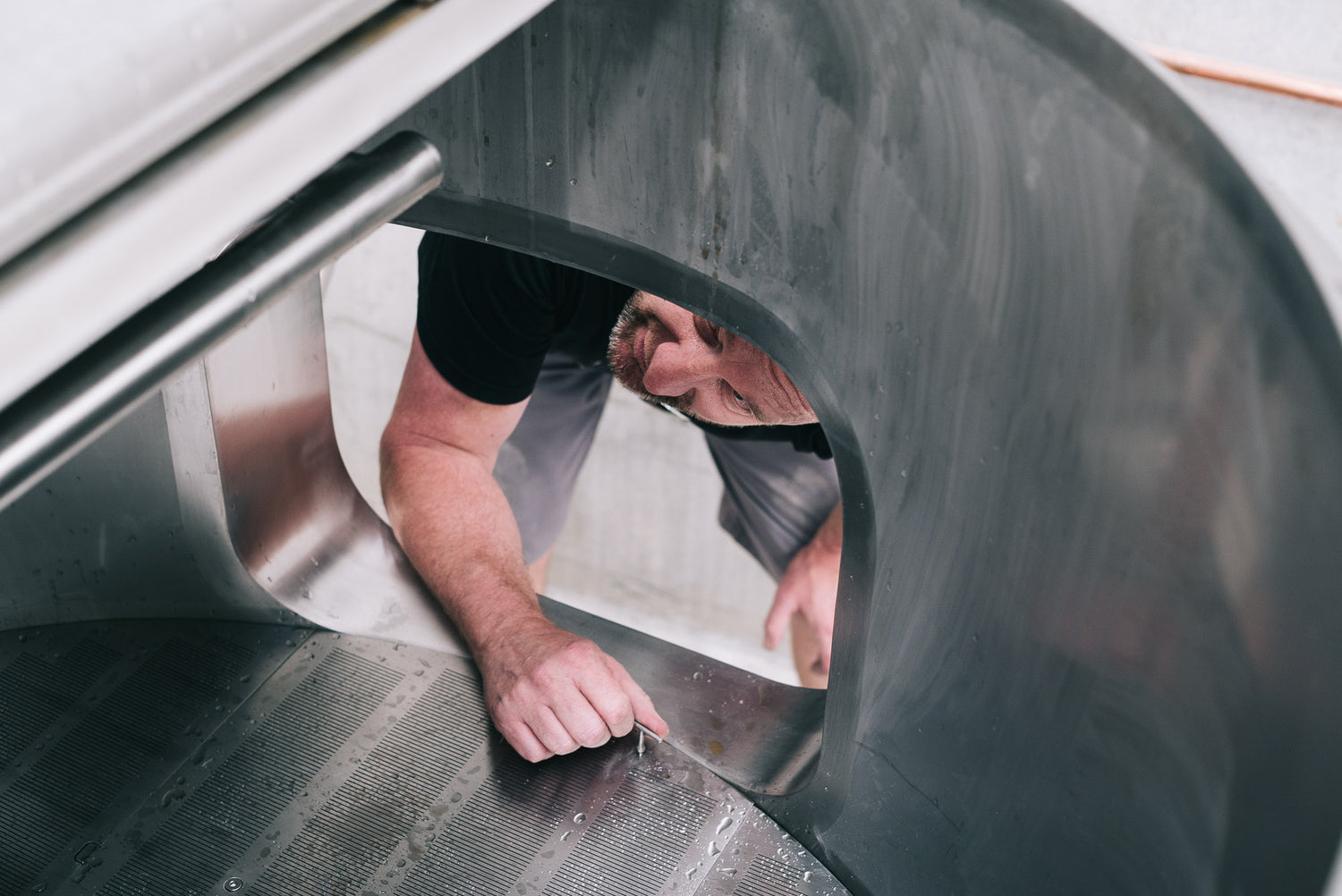In order to brew gluten free beer in Australia, the brewer's raw materials must be naturally gluten free. In Australia (and most of world), this means you can’t use barley, wheat, rye or oats.
This does not mean that enzymes have ‘reduced’ the gluten in beer, nor does it mean that beer is 'gluten friendly' or 'low gluten'. It means that the beer is 100% gluten free and safe for adults with gluten intolerances to enjoy; brewed using very similar methods and processes to every other brewery of the same size – just with naturally gluten free ingredients.
With a relatively minuscule recent history (20 years vs 2,000+), there is far less information, testing and trialling out there on gluten free brewing, despite reports that gluten free grains were actually the first to be used in beer – some archaeologists estimate that drinkers as far back as 20,000 years BC were using grains such as, buckwheat, rice and millet.
Why is brewing gluten free beer different?
Breweries are all bound by the same chemistry and physics. But, with brewing all grain gluten free beer comes a pint-full of nuances and curveballs. Alongside Rebellion Brewery in Ballarat, we are the only other dedicated gluten free brewery in Australia to brew all grain beer – which means we start with grains that have been malted.
TWØBAYS Head brewer Kristian and our brew team face challenges around the size of the diminutive millet, buckwheat and rice malts, the low levels of protein they contain, and natural enzyme activity that differs to barley, wheat and rye malts – to name a few hurdles.
Yet the team continues to push the beer boundaries every day; testing, refining process and dreaming up new style interpretations and flavours.

How long does it take a brewery to brew beer?
The length of time it takes to brew a gluten free beer is approximately the same as the time it takes to brew any all grain ‘barley’ beer; it just depends on styles, yeasts, recipes, methods and equipment.
Great beer often takes time to mature and reach full flavour – the biggest factor is whether the brew is an ale or a lager.
The beginning of the process (the mill, mash-in, first hop and transfer to lauter, kettle and fermenter) takes around six hours, depending on any additional ingredients such as passionfruit pulp or vanilla paste.
When the wort (the sugary liquid created when water is added to the malt) is mixed with yeast, it converts all the sugars to carbonation bubbles and alcohol – and we end up with beer! This is called fermentation.
For ales (Pale Ale, IPA, Stout, Sour), fermentation takes place at the top of the fermenter in warm conditions (18°C-22°C) using ale yeasts which love warm temperatures.
For lagers (Lager, Pilsner, Bock), the same activity takes place at the bottom of the tank, in cool conditions (less than 12°C) using lager yeasts which prefer cool temperatures to convert sugars.
Ale yeasts are more active in the warm conditions, converting all the sugars rapidly (normally three weeks or less). High percentage alcohol content beers generally take longer to brew; barrel-aged beers and spontaneous fermentation Sour beers.
Lager yeasts are a little slower in the cold (aren't we all?), dragging out the sugar conversion and the fermentation process to three weeks or more.
The huge variety of hops available from countries like Australia, New Zealand, Germany and the US are added during the brewing process – some at the kettle stage (when everything is still hot) and even more during fermentation. The choice of hops are made by the brew team, and the style of beer will dictate where the hops come from and how much is used. The flavours they offer us are incredible and can really change the mouthfeel and aroma of every beer.

How to brew gluten free beer
Similarly to timescales, the process of brewing gluten free beer is the same as brewing 'barley' beer; just with naturally gluten free malts and dry gluten free yeasts – hops are naturally gluten free.
“The possibilities are endless,” says TWØBAYS Head Brewer Kristian Martin.
“We use ‘traditional’ beer styles as a guide, but we’re not trying to replicate them. We’re creating new ways of showcasing great malts and expressing different flavours. Our creativity is not inhibited – in fact the limitations drive us to test the malts to their full potential.
"We're always running trials and experimenting. Reviewing incoming ingredients is really important to us because the performance of hops, malt and water profiles (impacted by weather and other factors) can impact consistency and risk how true to brand our beers are.
That TWØBAYS brand of beer is approachable, easy-drinking and sessionable, with a strong focus on quality and consistency over speed. We don't over-index on dry-hopping because our aim is for all our beers to pair well with most foods and occasions all year round. We always want to create the best experience possible for our consumers."

How to drink fresh gluten free beer in Australia
We pride ourselves on getting beer to our customers while it's as close to optimal drinking as possible; depending on the style – and factors outlined above, of course.
Hoppy beers should be consumed within a matter of months; but malt-driven beers can last for a long period of time. All of our cans are date-stamped, which means you can pick up a can, wherever you are, and look at the date on which it was packed (it's usually found underneath the can). The beers that we have put out in cans are all designed to be enjoyed within a year, with the hop-forward ales best consumed within six months.






